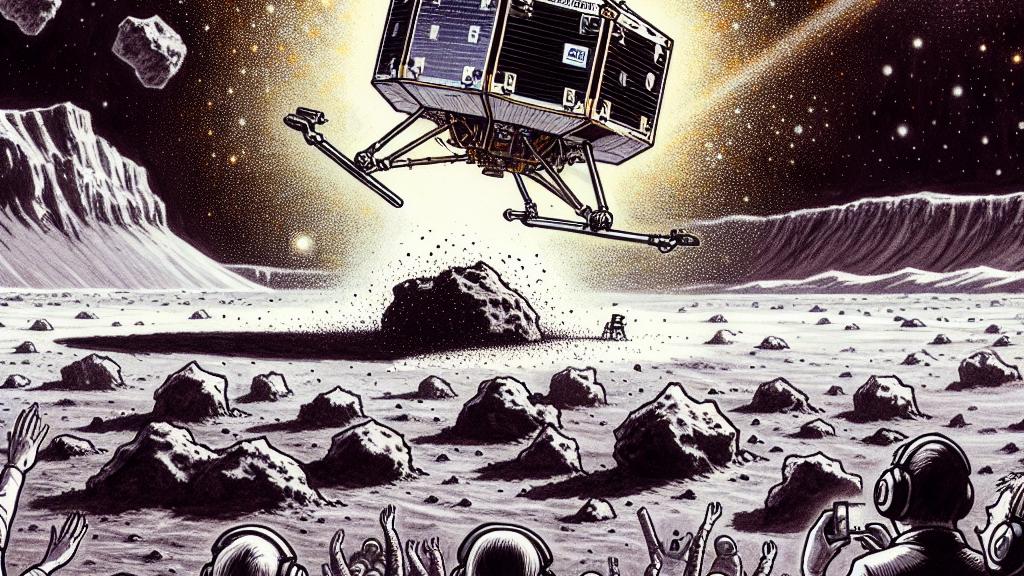Celebrating Philae's Historic Comet Landing
Overview
- Philae accomplished a historic feat on November 12, 2014, by landing on Comet 67P.
- The lander remarkably collected significant data even after bouncing across the comet's surface.
- This mission has drastically altered our understanding of comet formations and behaviors.

A Groundbreaking Milestone in Space History
On that exhilarating day, November 12, 2014, Philae, the groundbreaking lander crafted by the European Space Agency, achieved something extraordinary. It made a triumphant landing on Comet 67P/Churyumov-Gerasimenko, marking the first instance in history where a human-made object had ever touched down on a comet. This incredible journey lasted a full decade—traversing over 500 million kilometers—culminating in a heart-pounding descent that led to Philae's landing site, affectionately dubbed Agilkia. As scientists held their breath at the European Space Operations Centre, the historic significance of this moment rippled through both scientific communities and space enthusiasts worldwide, igniting hope for new discoveries about our solar system.
Unexpected Hurdles and Remarkable Discoveries
However, the excitement quickly mingled with anxiety when Philae's harpoons, designed to secure it to the comet's surface, failed to deploy. What ensued was a dramatic series of bounces, during which Philae inadvertently collected data from multiple locations on the comet—a twist of fate that turned a setback into a unique scientific opportunity. For instance, when Philae first landed, it recorded a soft, powdery surface, but just moments later, it encountered a much harder material, revealing striking contrasts in the comet's composition. Notably, these observations showcased that the interior held a remarkable 75%-85% porosity, a discovery that reshaped our understanding of how comets are structured and their potential role in the solar system's evolution.
Philae's Lasting Legacy in Astronomy
Philae's contributions extend far beyond its initial landing. The mission delivered groundbreaking experiments that measured seismic activity and temperature variations across the comet's surface, revealing astonishing temperature ranges from an icy -180ºC to a scalding 145ºC—data that synchronized perfectly with the comet’s 12.4-hour daylight period. But that's not all! By bouncing across different sites, Philae enriched scientists' knowledge about comet surface characteristics. It recorded seismic vibrations and temperature changes that had not been observed before, providing valuable insights into the comet's composition and behavior. This pioneering mission is not just a footnote in history—it has become a beacon of inspiration for future explorations aimed at demystifying other celestial bodies, ensuring that Philae’s legacy will continue to illuminate our understanding of the cosmos for years to come.

Loading...